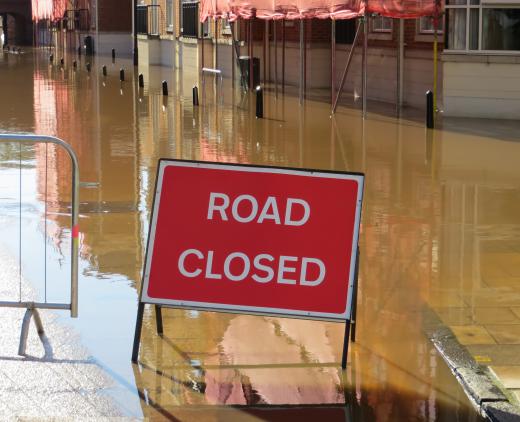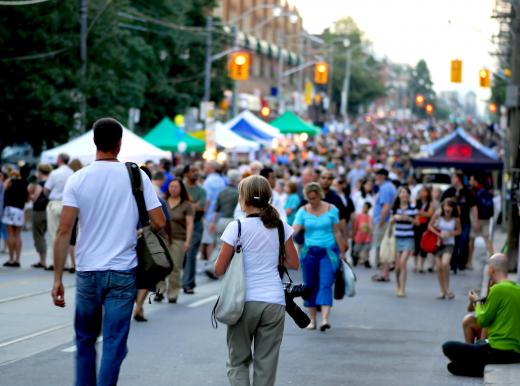A barrier board is a physical device used to restrict access to an area. It may be used in place of or in addition to guards, tire spike strips, or other devices. Barrier boards can be used for both temporary and permanent applications, and different types are used to control access or pedestrians, cars, or other vehicles. Typically, a barrier board more closely resembles a fence than the concrete block barricades used in road construction. In different regions, these boards are also known as council barricades, work barricades, or safety barricades.
The material and design of a barrier board must be matched to the needs of each application. Many of made of heavy duty plastic, though metal barricades can be used for long-term or vehicle applications. Some simply consist of temporary frames and boards constructed out of wood lumber, while others are pre-manufactured. Barrier boards may be combined with traffic cones to make them more visible, or to more effectively reroute traffic. They are often equipped with weights or sandbags to hold them in place and prevent them from falling over due to weather or vandalism.

A barrier board is most effective when it is readily identifiable by its coloring or signage. Yellow and black stripes or red and white striped patterns are easily identified in many parts of the world as a signal that access is not permitted. Others may be equipped with signs, such as graphical or spelled out "Do Not Enter" signs. Barrier boards may be painted, lined with reflective materials or well-lit to ensure they are easy for pedestrians or drivers to see.

Barrier boards are used in permanent settings around official government buildings. In these applications, they are often accompanied by a security guard, who restricts access for those who fail to yield to the barrier board. These boards prevent people from entering restricted areas, such as those designed for officials working in the building, and make it easier for guards to keep the site secure.

These barricades are also used in temporary applications, such as redirecting traffic around construction or an emergency site. For example, police may position a barrier board at entrance ramps to a highway that has been closed due to extreme weather or a mudslide. These boards also serve as effective tools for redirecting traffic or people during a special event, such as a parade or street fair. An attendant may be positioned near the barricade to help indicate a safe path around the event, and to ensure that pedestrians or vehicles do not attempt to enter an unsafe area.
